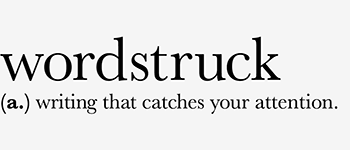I’m in the middle of producing a lot of copy for a marketing campaign. And I mean a lot of copy in the sense that I’m essentially writing about the same product for a number of different audiences and formats, including a whole heap of direct mails.
It’s great that my client is trying to communicate with their customers in a personal and relevant manner, but it does pose a challenge for me as a copywriter – how do I make sure that the last thing I write about Product X is as fresh as the first?
It usually starts off being quite straightforward. Whenever I’m drafting out some new copy, I start by writing a simple sentence about what I’m trying to do at the top of the page, for example:
‘Write an email to customer Y, telling them when product X will be released, explaining why it will help them and directing them to website Z for more information.’
This helps me create the structure of the copy, sometimes gives me restrictions like word count for example, and gives me a clear understanding of what I want people to think, feel or do as a result of reading the piece.
But once I’ve been writing about something for a while, it can be tempting to fall into a patchwork approach and steal a bit of copy from here and another from there. And whilst I won’t deny that I do re-use copy that I’ve already written, especially where I think it’s explained something very clearly, this approach can lead to lazy writing and the trap of the cliché.
So how to re-invigorate a brain that’s already found 21 ways of writing about the same thing?
I turned to a few copywriter mind tricks (not quite so impressive as Jedi mind tricks, but they work for me). The first is to write using a different style, so imagine you’re writing a fairy story, or a detective novel for example. In this case I imagined I was writing it as a Barrack Obama speech.
Another trick is to set yourself a constraint, such as starting with one letter of the alphabet and finishing with the next or writing your copy in exactly 50 words.
Now I’m not saying that the results of either of these mind tricks will find their way into print, but within those early drafts were some phrases and ideas that I can use that I wouldn’t have come up with if I hadn’t made myself take a different view of the words I was using.
It’s a useful writing experiment that writing guru and tone of voice expert John Simmons employs in his book ’26-ways of looking at a blackberry’. He takes a rather ordinary piece of writing and re-writes it in 26 different styles, ranging from William Shakespeare to Plain English. Now, not all of them work, as he’ll admit, but the results are sometimes surprising and delightful. And they certainly offered me a way of freshening up my words today.

Comments are closed.